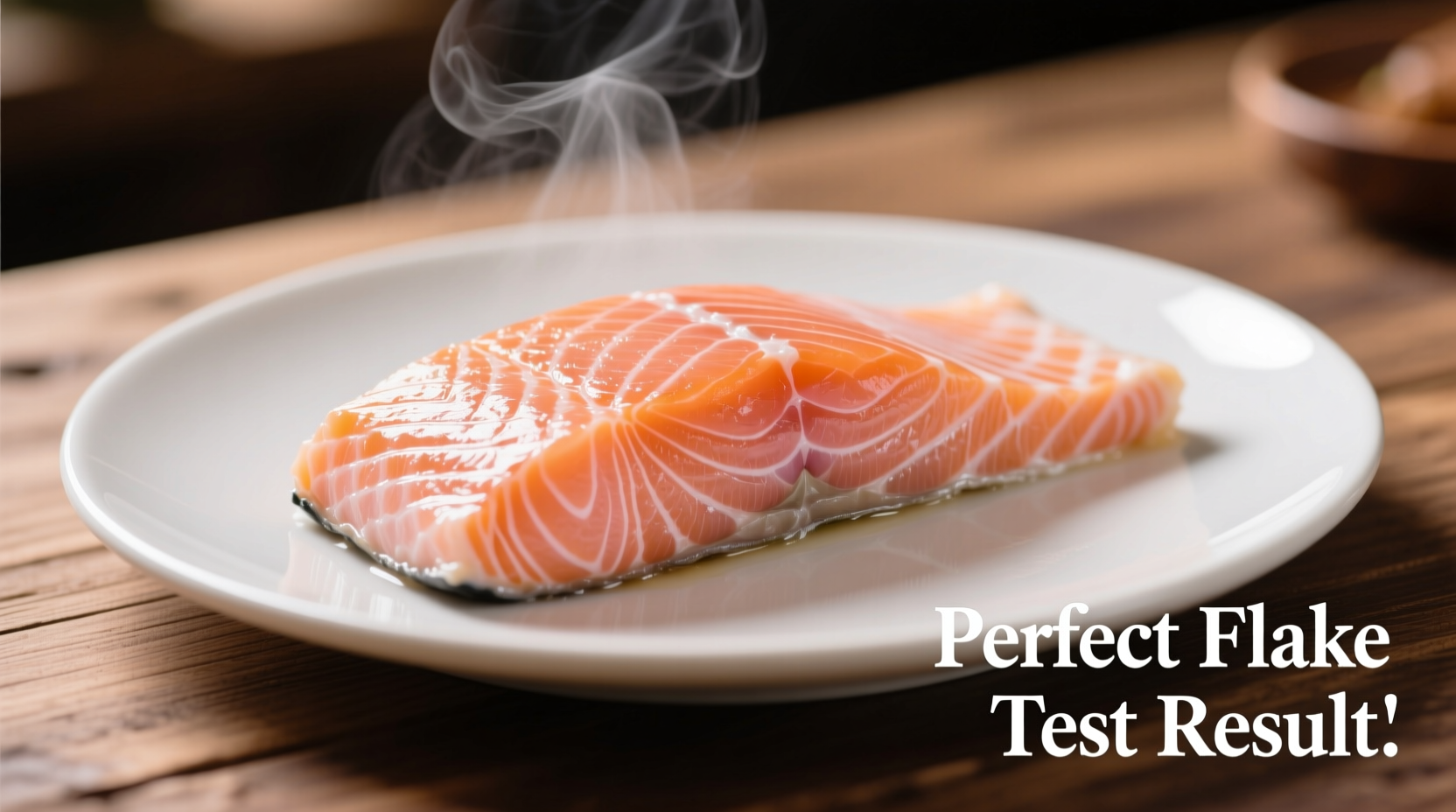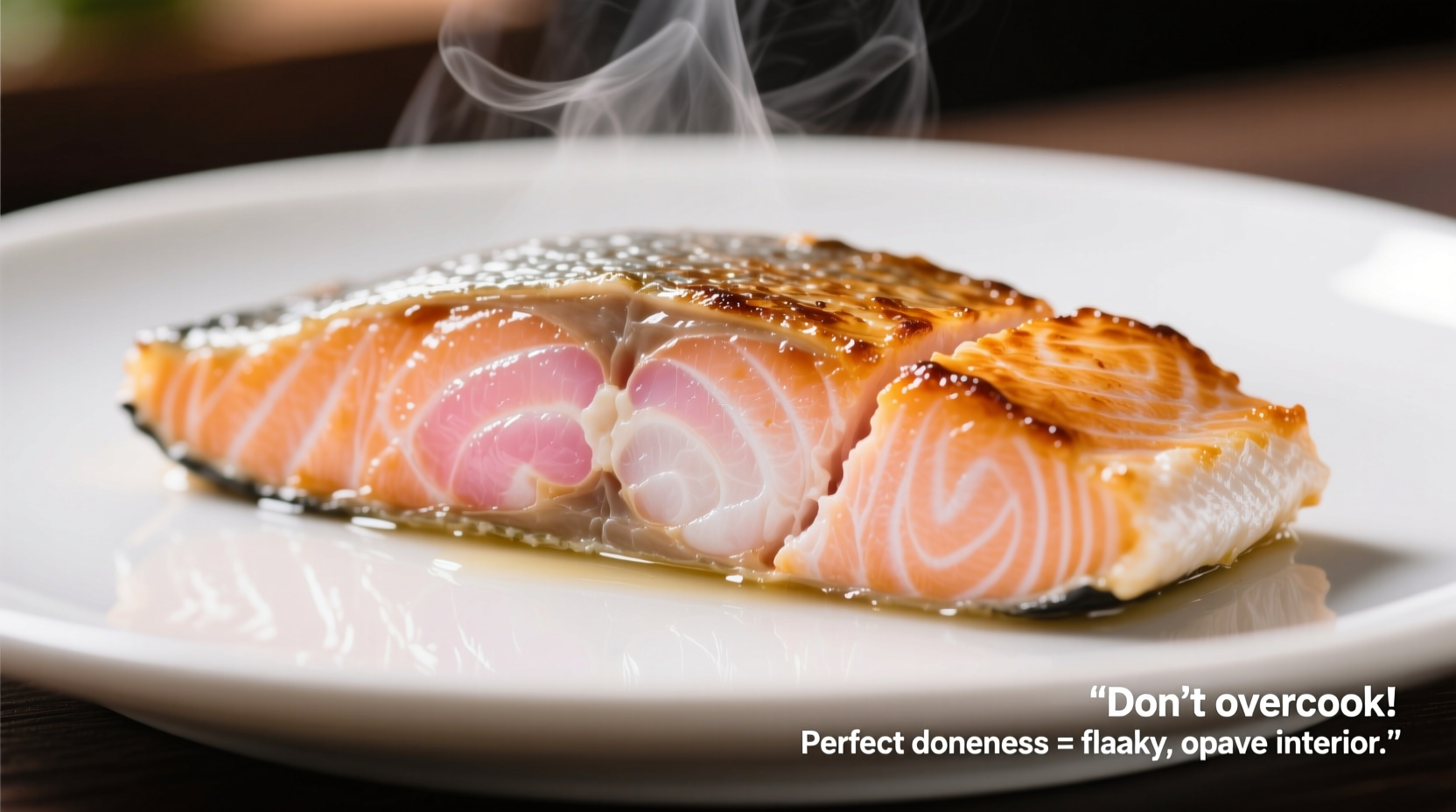The most reliable way to know when salmon is done cooking is by checking its internal temperature with a food thermometer—125°F (52°C) for medium-rare or 135°F (57°C) for medium. Visual cues include opaque flesh that flakes easily with a fork but remains moist, and a change from translucent red to pinkish-white color.
Mastering Salmon Doneness: Your Complete Guide
Cooking salmon perfectly can transform an expensive fillet from restaurant-quality to disappointing in minutes. Whether you're pan-searing, baking, or grilling, knowing exactly when your salmon reaches ideal doneness ensures both food safety and exceptional texture. Let's explore the precise methods that guarantee perfect results every time.Why Perfect Salmon Doneness Matters
Undercooked salmon risks foodborne illness from parasites like Anisakis, while overcooked salmon becomes dry and loses its delicate flavor. The FDA recommends cooking fish to a minimum internal temperature of 145°F (63°C), but culinary experts widely agree this temperature produces dry results for salmon. Most chefs and food scientists recommend removing salmon from heat at 125-135°F (52-57°C) to account for carryover cooking while ensuring safety.| Doneness Level | Internal Temperature | Visual Characteristics | Texture |
|---|---|---|---|
| Raw | <100°F (38°C) | Translucent red, jelly-like | Very soft, no separation |
| Medium-Rare | 120-125°F (49-52°C) | Slightly translucent center | Flakes gently, moist throughout |
| Medium | 130-135°F (54-57°C) | Mostly opaque, slight translucency | Firm but still moist, clean flake |
| Well-Done | >140°F (60°C) | Completely opaque | Dry, crumbly, separates easily |
The Thermometer Method: Most Accurate Approach
Using an instant-read thermometer provides the most reliable results for how to tell if salmon is cooked properly. Insert the probe horizontally into the thickest part of the fillet, avoiding the bone if present.- For medium-rare perfection: Remove salmon from heat at 125°F (52°C)
- For traditional medium doneness: Remove at 135°F (57°C)
- Always account for carryover cooking: Temperature will rise 5-10°F during resting
Visual Indicators: No Thermometer Needed
When you need to know how to tell if salmon is done cooking without a thermometer, these visual cues work reliably:- Color transformation: Watch for the change from deep translucent red to opaque pinkish-white. Start checking when about 75% of the flesh appears cooked
- The flake test: Gently press the thickest part with a fork. Perfectly cooked salmon will flake into large, moist segments but still hold together
- Surface moisture: Finished salmon releases a small amount of white albumin (protein), but excessive amounts indicate overcooking

Tactile Testing: The Finger Method
Professional chefs often use the finger test to determine salmon doneness. Press the thickest part gently with your finger:- Raw: Feels like the fleshy part of your palm below the thumb (very soft)
- Medium-rare: Similar to the feel when touching thumb to middle finger (yielding but resilient)
- Medium: Comparable to thumb touching index finger (firmer with slight give)
- Overcooked: Feels like pressing your thumb alone (very firm)
Cooking Time Guidelines (With Important Caveats)
While timing alone isn't reliable for how to check if salmon is cooked, these general guidelines help prevent under or overcooking:- Pan-searing: 4-6 minutes per side for 1-inch thick fillets
- Baking: 10-12 minutes at 400°F (200°C) for 1-inch fillets
- Grilling: 6-8 minutes per side over medium heat
Avoid These Common Salmon Cooking Mistakes
Even experienced cooks make these errors when determining when is salmon done cooking:- Moving too soon: Flipping or moving salmon before it releases naturally from the pan causes tearing
- Skipping the rest: Cutting immediately after cooking loses precious juices—rest 5 minutes
- Over-flaking: Testing doneness too aggressively breaks the delicate flesh
- Ignoring carryover cooking: Removing at target temperature instead of 5°F below
Special Considerations for Different Cooking Methods
The best approach for how to tell when baked salmon is done differs slightly from pan-seared:- Pan-searing: Watch for the color change starting from the bottom up; flip when about halfway cooked
- Baking: Check earlier than expected—oven temperatures often vary significantly
- Grilling: Use two-zone cooking; move to indirect heat when 75% opaque to finish gently
- Poaching: Remove when salmon just begins to flake—it continues cooking in hot liquid











 浙公网安备
33010002000092号
浙公网安备
33010002000092号 浙B2-20120091-4
浙B2-20120091-4